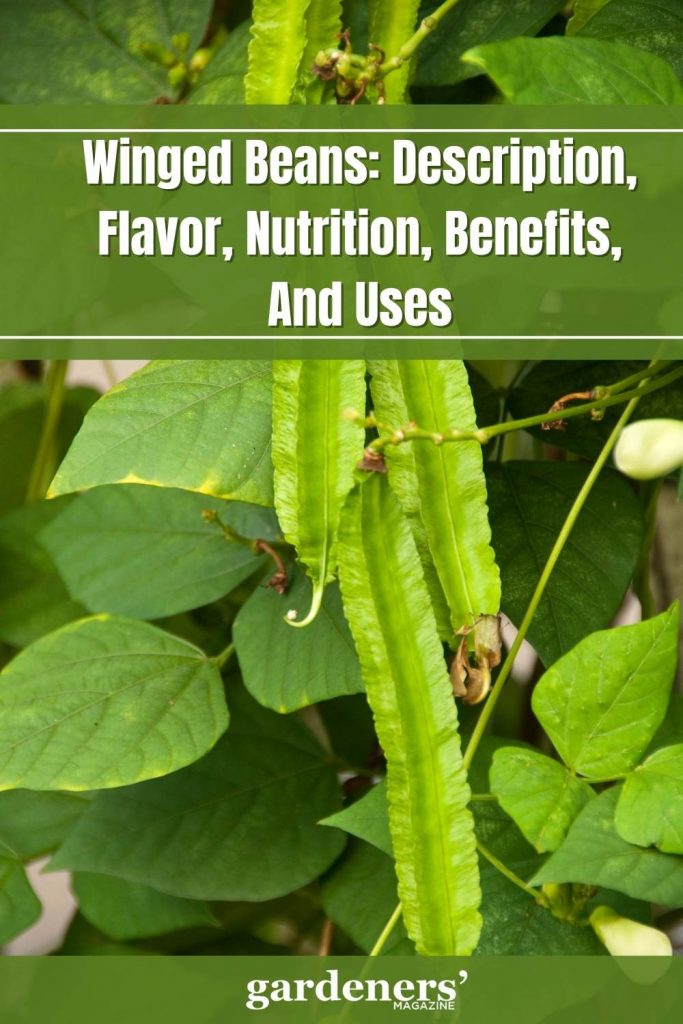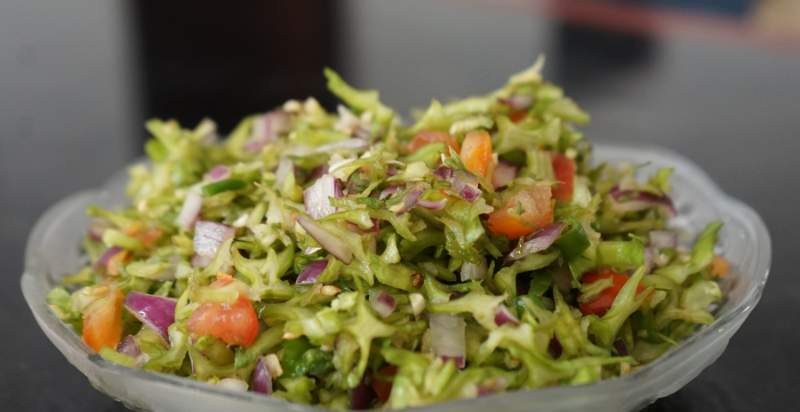Winged beans, also known as Goa beans, are an edible legume native to the tropical climates of Southeast Asia. They are a popular food crop in Thailand and India due to their high protein content, ease of cultivation, and delicious flavor. The plant grows quickly and has abundant flowers that attract beneficial insects. Its long vines can be trained to climb trellises for a vertical garden. Here is everything you need to know about growing and eating winged beans.
What are Winged Beans?
Winged beans are a type of legume that is native to the tropical climates of Southeast Asia. They are attractive, with green pods that curve outward at their edges and resemble wings. The pods grow up to 10 inches long and contain four or five edible seeds. Winged beans are known for their high nutrition content, containing as much as 25 per cent protein, fiber, and vitamins.

History and Origin of Winged Beans:
Winged beans have existed since ancient times, with many cultures believing them to hold special properties. In Ancient Greece, winged beans were believed to be a symbol of fertility and thus were often used in religious ceremonies dedicated to the gods. It is also thought that soldiers ate them in the Trojan War to increase their strength and vitality.
The scientific name of winged beans is Psophocarpus tetragonolobus, and they are believed to be native to Southeast Asia. They have been cultivated in India since at least 500 BC, where their popularity spread throughout the region due to their nutritional benefits. Today, they can be found growing wild in Bangladesh, Cambodia, China, India, Indonesia, Myanmar, Nepal, Sri Lanka and Thailand.
Cultivation of Winged Beans:
Winged beans require a warm, humid climate for germination and growth. Soil should be well-draining and enriched with compost or manure before planting. The seeds should be planted 1–2 inches deep in rows 3–4 feet apart. Water deeply and regularly for the first few weeks, then reduce watering once the plant is established. Winged beans grow best in full sun, but partial shade is tolerated in hot climates.
Harvesting of Winged Beans:
The young pods of winged beans are most tender and flavorful when harvested at about 4–5 inches long. The entire plant can be harvested as the pods mature, or just the pods can be picked. Winged beans are ready to harvest about 2–3 months after planting. The leaves and flowers of winged beans are also edible and can be added to salads or stir-fries.
Health Benefits of Winged Beans:
Winged beans are a good source of dietary fiber and contain high levels of essential minerals such as iron, magnesium, copper, potassium and zinc. They also provide vitamins A, B1, B2, and C. Winged beans are rich in protein, making them an important addition to vegetarian or vegan diets.
Furthermore, they are low in calories and fat-free, making them a healthy choice for those on weight loss diets. Winged beans are also beneficial in reducing inflammation and promoting digestive health. Additionally, research has shown that the compounds found in winged beans may help protect against cancer and other diseases.

What is the Flavor Profile of the Winged Beans?
The flavor profile of the Winged beans is earthy and nutty with a hint of sweetness. There are also notes of umami, which gives it an interesting and unique flavor that can enhance any dish. The texture is firm yet tender when cooked, making it an ideal addition to many different meals. Its high protein content makes it an excellent meat substitute, and its versatility makes it easy to pair with various dishes.
Where can the Best Quality Winged Beans be found?
The best quality Winged beans can be found in tropical regions like Southeast Asia and Africa. They are also widely available from specialty stores, health food stores, farmers’ markets, and online retailers. When selecting Winged beans for purchase, look for bright green pods that are firm to the touch with no signs of discolouration or bruising. The beans should also be free of any blemishes or spots. Opt for smaller, younger pods with a sweeter flavor and a more tender texture than larger, mature beans.
How do you Store Winged Beans?
Winged beans should be stored in an airtight container in a cool, dry place. If they are stored correctly, they can last up to two weeks. Storing them at temperatures between 32 and 41 degrees Fahrenheit is best. After harvesting, removing any dirt or debris that may have attached itself to the beans during this process is important.
You can also store them in the refrigerator, but they should be used within a few days of being placed there. Once cooked or frozen, they can last for up to three months. Label and store the beans properly so you do not confuse them with any other legume. You can enjoy these delicious green beans for months with proper storage techniques.
How to Use Winged Beans in Recipes?
Winged beans are an incredibly versatile ingredient, and can be used in a wide range of dishes. In Thai cuisine, they are often stir-fried with garlic and chili peppers and served as a side dish. They can also be boiled, steamed or sautéed and added to soups or salads for a nutritious boost.
For a delicious vegetarian main course, try making a stir-fry with winged beans, mushrooms and carrots. This dish can be served over cooked white or brown rice for an easy meal that packs in plenty of flavor and nutrition.
Winged beans can also be used in savory dishes like omelettes and frittatas. Simply sauté the beans with garlic, onion and other vegetables of your choice and add them to your egg mixture before cooking. This is a great way to enjoy all the health benefits of winged beans while enjoying a delicious meal.
No matter how you choose to use them, winged beans are sure to make any dish more flavorful and nutritious. Enjoy exploring all the possibilities that this versatile ingredient has to offer!

Conclusion:
Winged beans are a great addition to any diet. They are incredibly nutritious and can be used in many different dishes. Whether looking for a new side dish or a vegan “meat” alternative, winged beans will satisfy your cravings! Just remember to cook them properly so that they retain their nutrient content and flavor. Enjoy!
- Everything You Wanted to Know About Red Tamarillos - June 2, 2025
- A Guide to Tulips: Everything You Need to Know & More… - June 2, 2025
- Guanabana: Description, Flavor, Benefits, And Uses - May 27, 2025

1 thought on “Winged Beans: Description, Flavor, Nutrition, Benefits, And Uses”
Comments are closed.